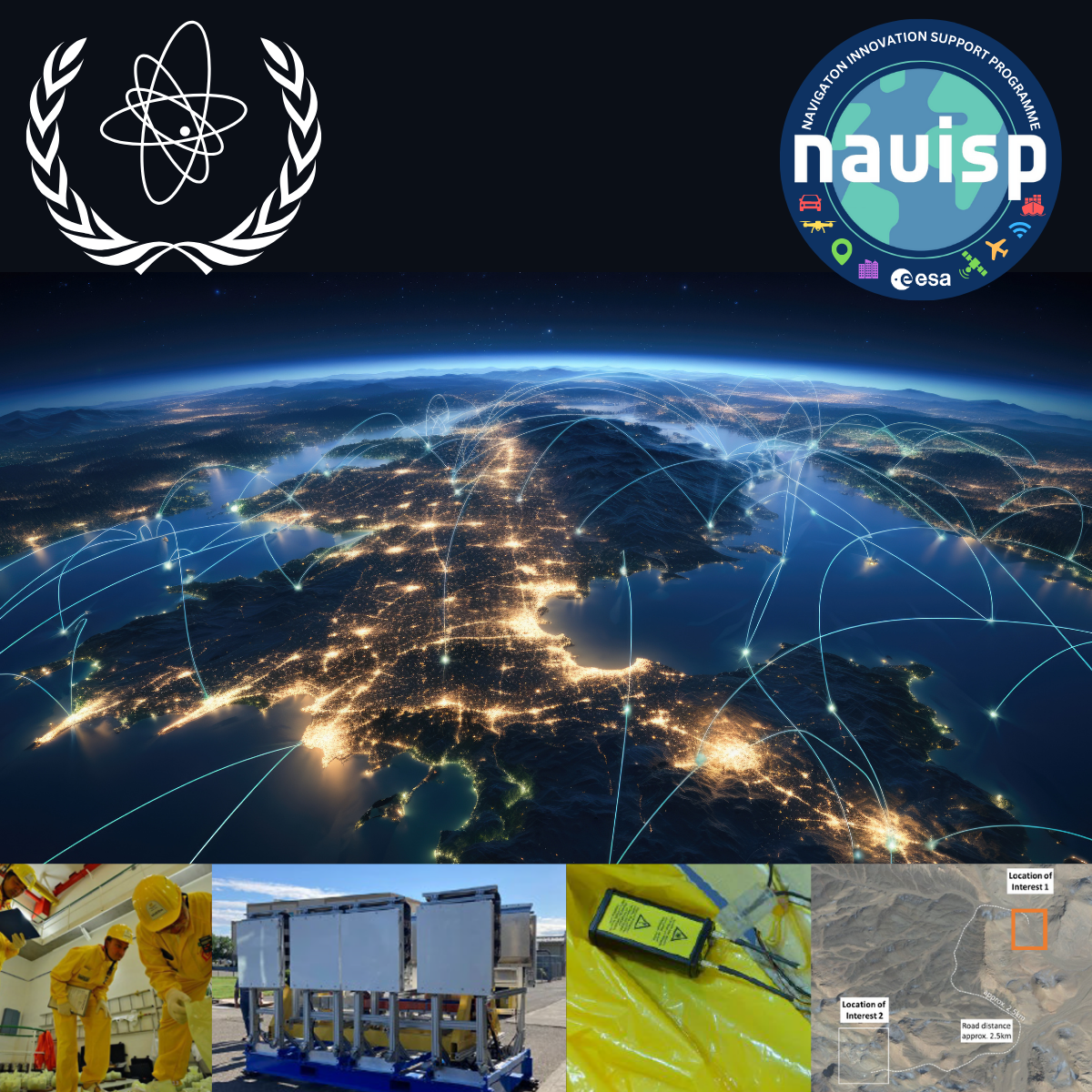NAVISP partners with the International Atomic Energy Agency to foster resilient PNT
Last Updated: 23/10/2023 12:23 Created at: 23/10/2023 12:16

In a remarkable step towards promoting safe and secure utilization of nuclear technologies on a global scale, the International Atomic Energy Agency (IAEA), recognized as the world's central hub for collaboration on nuclear energy, has joined forces with the European Space Agency's Navigation Innovation and Support Programme (NAVISP). This collaborative effort, under the umbrella of NAVISP Element 1, aims to harness cutting-edge positioning, navigation, and timing (PNT) technology to enhance the safety controls associated with the use of nuclear technologies.
The IAEA strives to advocate for the safe, secure, and peaceful application of nuclear technologies across the world. As part of their mission, they implement safeguards—technical measures aimed at independently verifying a State’s commitment to utilizing nuclear facilities and materials solely for peaceful purposes. Key components of the IAEA safeguards system include verifying a State’s adherence to agreements and protocols between the State and the IAEA, and ensuring the accuracy and completeness of nuclear material declarations made by States.
An important component of the collaboration with NAVISP involves leveraging advanced communication technologies and satellite information for efficient data authentication and outdoor surveying, particularly in remote and uncharted areas, using precise PNT information. The integration of such technologies will facilitate streamlined operations at the IAEA, empowering the organization to swiftly respond to short-notice access requests to new and potentially challenging sites. The utilization of trusted PNT data generated by field instruments will strengthen the IAEA's capability to derive credible, impartial, and technically sound safeguards conclusions regarding the peaceful use of nuclear material.
In this regard, a webinar held on October 12, focused on this collaboration and provided in-depth insights and comprehensive information regarding various aspects of this collaborative effort. Discussions during the event highlighted the potential of collaboration and underscored the crucial role of precise PNT information in ensuring the effectiveness of such missions. The webinar was hosted by Mr. Binda, the Element 1 Manager, representing the NAVISP programme and its efforts. Mr. Finker, Technology Foresight Specialist, shared invaluable insights on behalf of IAEA during the event. Additionally, Mr. Caparra, an ESA Expert in Authentication/Encryption PNT technology, offered a sneak peek into the upcoming activity EL1 077, which, driven by IAEA safeguards needs, intends to study, design, and demonstrate the use of the cellular networks technologies for PVT assurance and encryption of ranging signals, considering robustness against post-quantum cryptography. This technological advancement holds particular significance for use cases such as outdoor geolocation surveys, where individuals carry out a sequence of measurements in outdoor settings, possibly in close proximity to towering structures that might interfere with navigation signals, or in situations where the navigations signals might be intentionally tampered with.
In the subsequent stages of this collaboration, ESA and IAEA plan to establish an on-field Partnership Project to further develop and validate a tailored PVT assurance system, specifically designed to support IAEA Safeguards needs. This initiative underscores the commitment of both organizations to bolster safety and security measures within the nuclear domain, while promoting the peaceful use of nuclear technologies.
All information about the event and the presentations can be found below. Should you need additional information don’t hesitate and write an email to navisp@esa.int.
